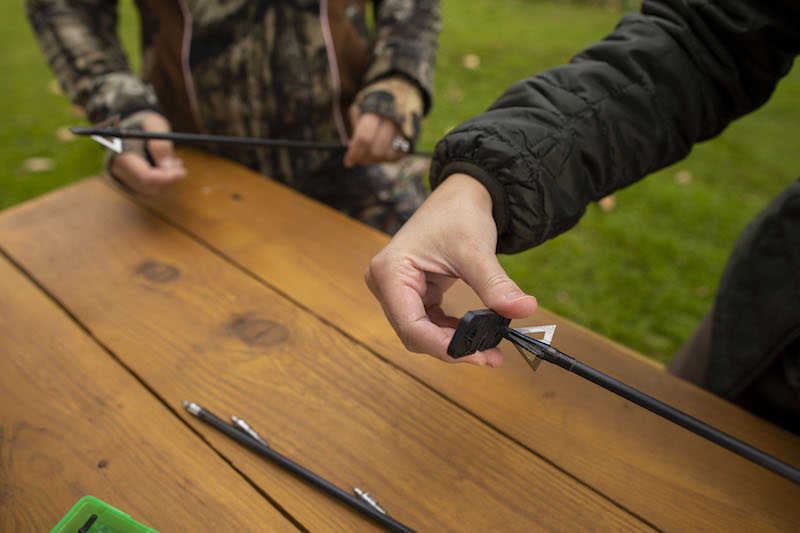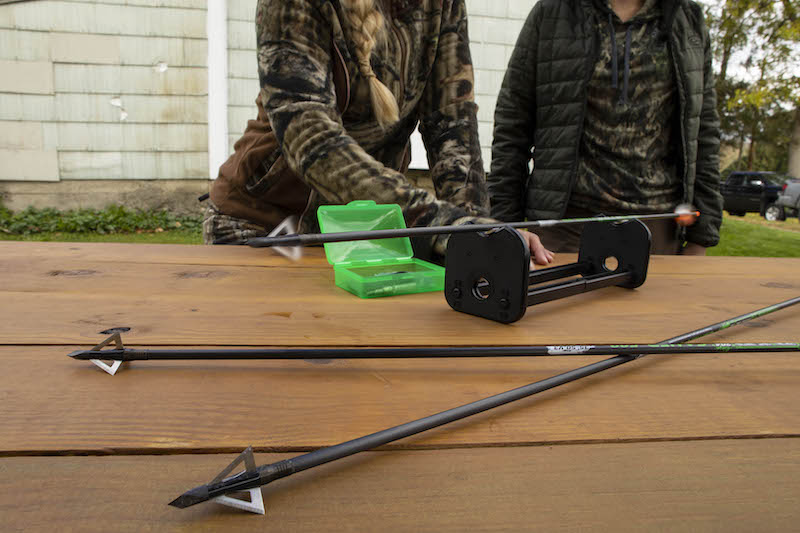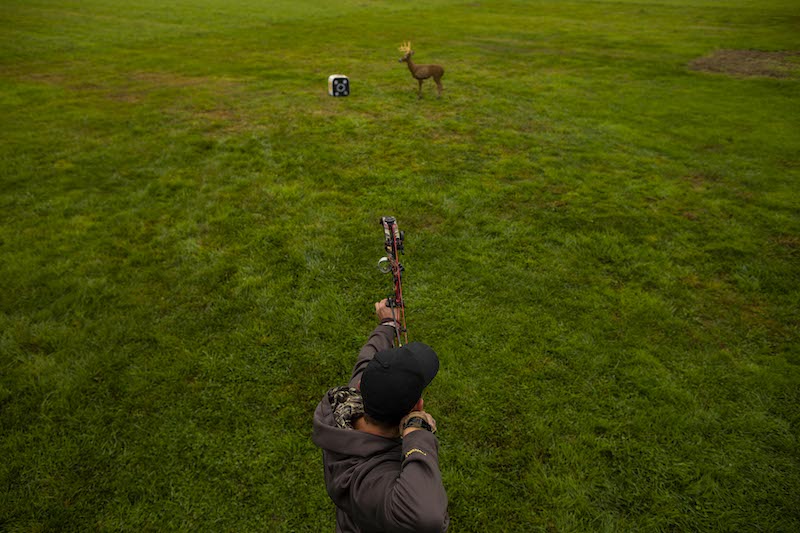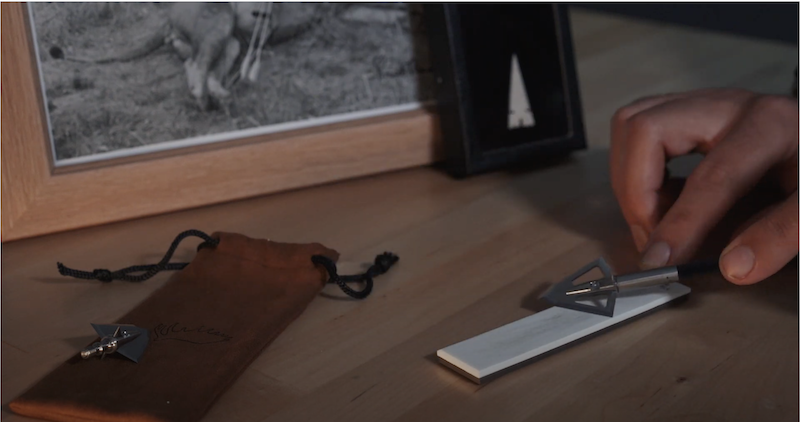You’ve practiced all summer and found a great hunting spot. But are your broadheads ready to hunt? Before hitting the woods, make sure your broadheads are deadly accurate and razor sharp. Here’s how.

Screw the broadhead onto your arrow shaft. Photo Credit: ATA
Remove a broadhead from the package, and use a broadhead wrench to screw it onto an arrow shaft.

Use an arrow spinner to check for wobbling. Photo credit: ATA
Place your arrow on an arrow spinner, and spin it while watching the broadhead’s tip to check for wobbling. If it spins true, repeat the process with your other broadheads and arrows.
If the broadhead wobbles, screw it into another arrow and spin again. If the problem persists, set that head aside and try another. If you still can’t get your broadhead to spin true, visit an archery shop and ask a pro to square your arrows. If all that fails, the issue might be a bent broadhead ferrule. The shop’s pro staff can further trouble-shoot the issue.

Check the accuracy of your shot and adjust accordingly. Photo Credit: ATA
Shoot your broadheads to see where they hit. Start at close range and work back to your maximum distance. Your broadheads should hit close to where your practice tips hit, but it’s not uncommon for them to hit 1 or 2 inches off. Adjust your sight to your broadheads if they’re off a bit.
If your broadhead-tipped arrows fly oddly or land far from your practice tips, make sure your bow is tuned. Archery shops are a fantastic resource, and their pro staff will help tune your bow. If tuning isn’t the issue, try shooting a higher-profile fletching to steer your arrows.

Sharpen or replace your blades as necessary. Photo Credit: ATA
After shooting your broadheads for testing and practice, you must resharpen them or replace their blades. Sharpening broadheads isn’t difficult if you follow some guidelines.
You must sharpen your broadheads at a consistent angle. Try using a sharpener with a fixed angle or a sharpening jig. With practice, you can also sharpen broadheads by hand. Apply the same number of strokes to each side of the blade unless you’re sharpening a single-bevel blade.
Don’t apply heavy force while sharpening broadhead. Let the abrasive to do the work while maintaining light, consistent pressure. As you complete the sharpening process, the broadhead’s weight applies enough pressure to hone the edge.
If you’ve shot a broadhead into dirt, wood, rocks or an animal, start your sharpening process with a coarse abrasive and keep sharpening with progressively finer abrasives. If you’ve shot your broadheads into foam targets or they need a light touch-up, use a fine stone, ceramic rod or a pull-through sharpener. You can also fine-tune their sharpness with a leather strop.
When properly sharp, broadheads should slice paper with a light push or sever a rubber band with light pressure.
Need help making your broadheads fly true? Consult the experts at an archery shop before your bow for bow season. Find a nearby archery shop by clicking here.